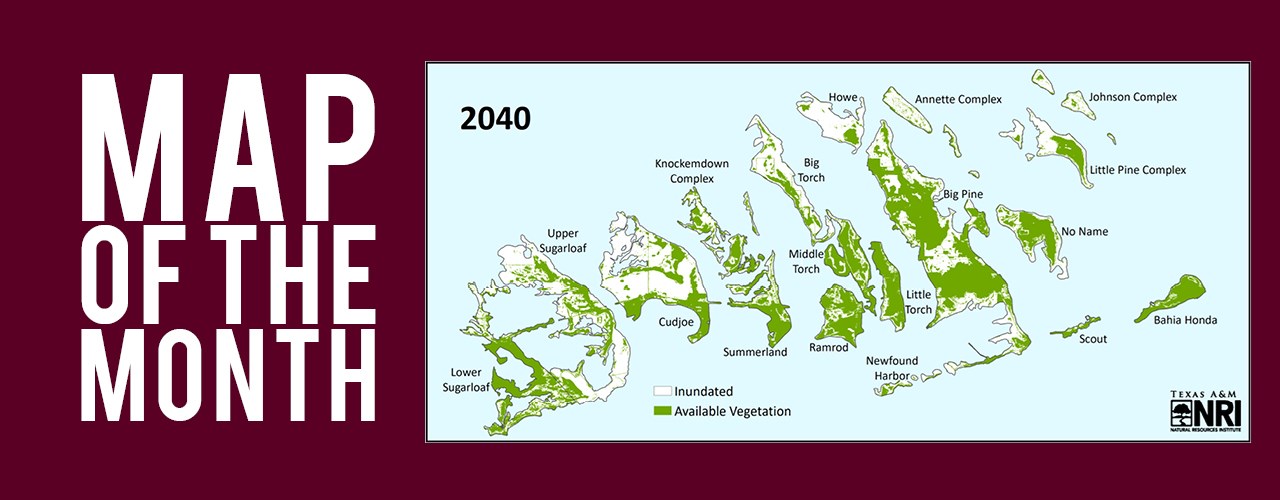Sink, Swim, or Take the Higher Ground: Challenges Facing Rare Species Management in the Florida Keys
A large percentage of the work we do at the Texas A&M Natural Resources Institute (NRI) relates back to stewardship of wildlife. Whether we are engaging with landowners about land management practices, monitoring rare species populations, or working with military installations to develop balanced land-use plans, wildlife and their habitat are at the forefront of our projects. Available habitat is one of the key components for the viability and sustainability of any species and their populations over time. Considerations of current and future habitat conditions and availability are critical in assessing wildlife management goals and strategies.
Some habitat changes are easy to recognize, such as land fragmentation and habitat loss due to infrastructure development, while others will gradually evolve unnoticed. Sea level rise (SLR) is one of those unassuming factors often overlooked that deserves special attention due to the potential impact on coastal species.
Over the past 50 years, Texas A&M University and NRI researchers studied two unique species in the Lower Florida Keys, the endangered Florida Key deer (Odocoileus virginianus clavium) and Lower Keys marsh rabbit (Sylvilagus palustris hefneri).
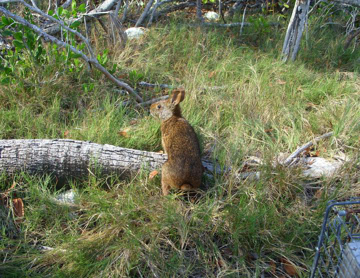
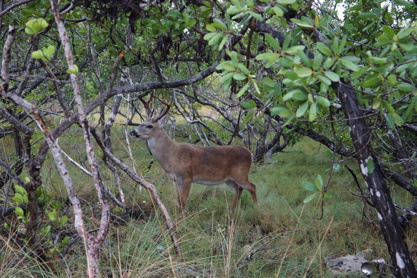
(Left) Adult Lower Keys marsh rabbit and (Right) Adult Florida Key deer.
Photos by Tom Dixon and Alison Lund.
Both endemic to the Keys, these species rely heavily on specific habitat―upland vegetative communities (pine rock lands and hardwood hammocks) for the deer and the lowland regions (saltmarsh-buttonwood transition zones, freshwater marshes, and mangrove swamps) for the rabbit. Key deer and Lower Keys marsh rabbit habitats are remarkably unique yet only separated by small elevational differences, resulting in dramatically divergent vegetative communities in the Lower Florida Keys.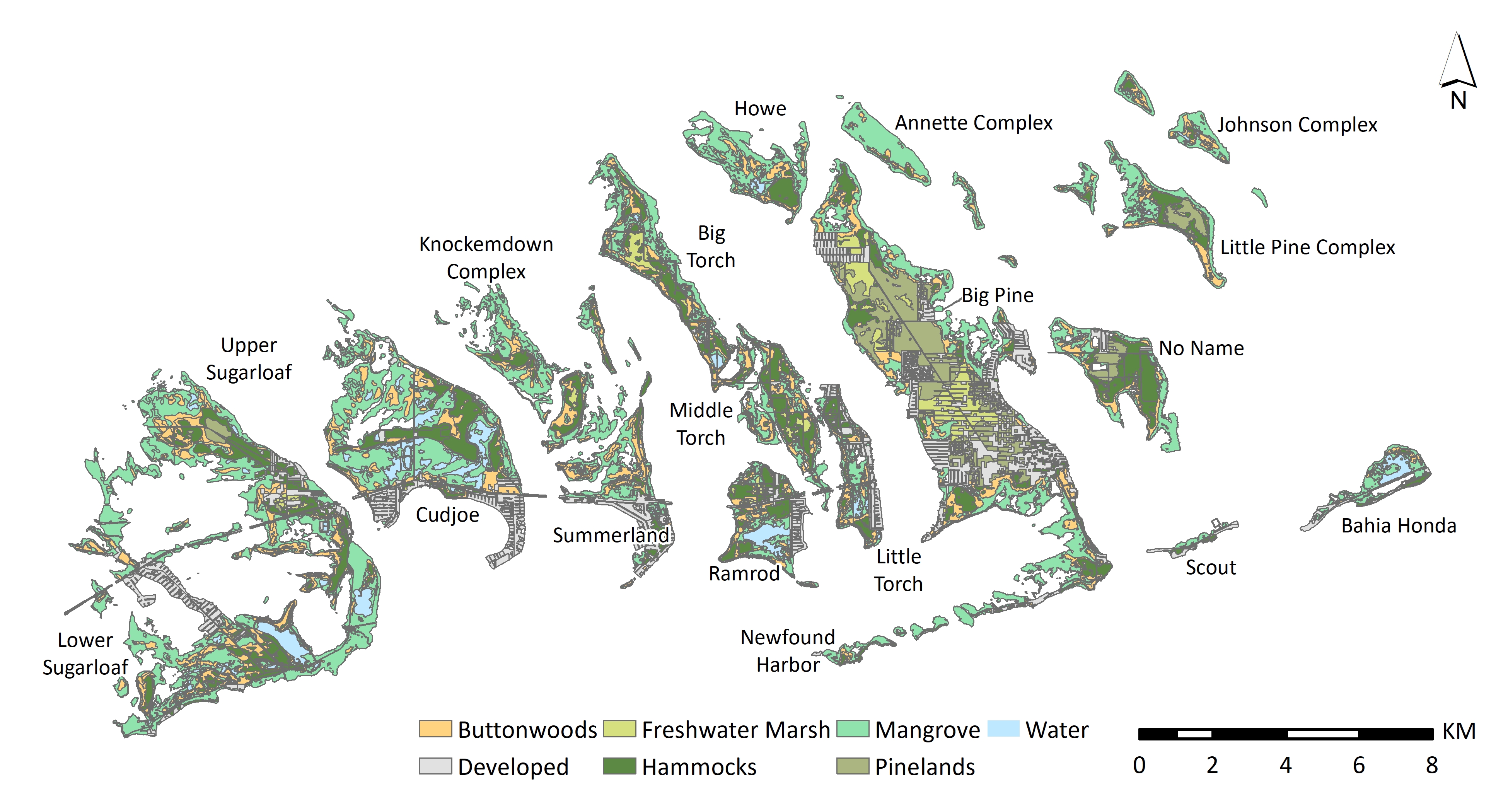
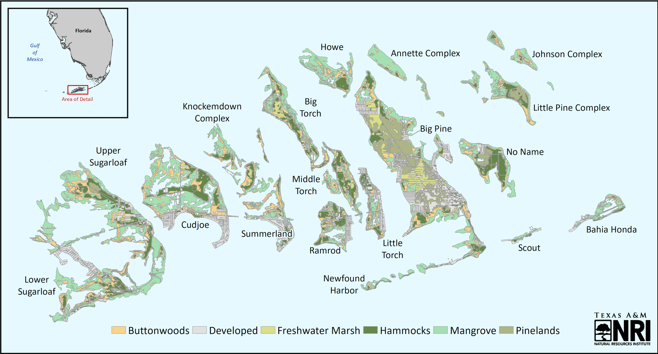
Lower Florida Keys vegetation communities.
In the Florida Keys, about 90 percent of the land mass is <2-m above mean sea level, meaning small increases in sea level can have a pronounced effect. Zhang et al. (2011), for instance, found that a 0.6-m rise in sea level would inundate 70 percent of the total land surface of the Florida Keys and, when comparing inundation dynamics, the Lower Florida Keys are more susceptible than the Upper Florida Keys. Numerous studies have described the impact of SLR on coastlines, but few have evaluated its impact on endangered species.
While the cause of sea-level rise is subject to intense debate, as wildlife professionals, we continue to analyze and best predict the extent to which rising sea levels will affect habitat of focal species. For species in the Keys, rising water will have significant impacts including shifts in vegetation and habitat dynamics. Fresh groundwater sources are likely to decline due to the rising salt water table, leading to loss in upland, freshwater wetland, and transitional habitats. Ross et al. (2009) demonstrated that even a small 0.2-m rise in sea level would eliminate most of the upland and transitional habitat in central Sugarloaf Key, an area currently used by both the Key deer and Lower Keys marsh rabbit. For these reasons and many others, incorporating sea level projections into short-term management planning and long-term conservation strategies is important to species sustainability.
Recently, our researchers used a compartment model to determine future risks associated with SLR in the Lower Florida Keys for Key deer viability. They determined potential future scenarios based on five SLR scenarios (with one being the lowest sea level rise scenario and five being the highest) currently described throughout the climate change literature. Of these scenarios, the scientific literature suggests that upper scenarios are currently the most likely to occur (Zhang et al. 2011, IPCC 2014, NASA 2017, NOAA 2017, TNC 2011).
Our Map of the Month features the third scenario with SLR projections at different time-intervals (2018, 2040, 2070, and 2100) as an example of how habitat can change over time.

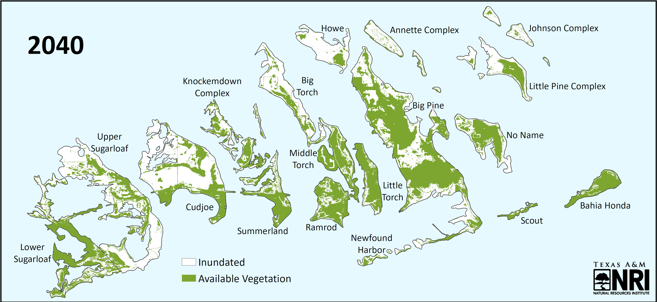
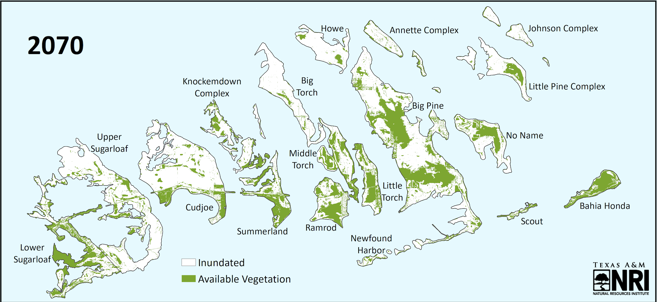
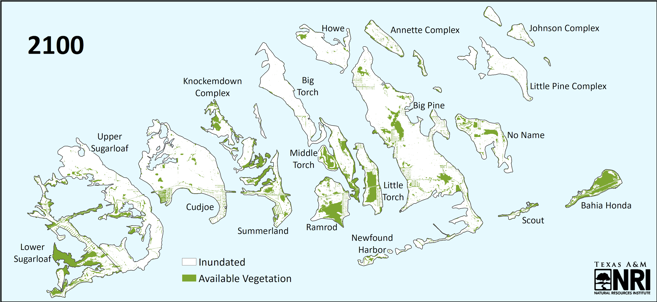
Generally, our research found that under most likely SLR scenarios, the Key deer will experience declines in habitat, negatively impacting carrying capacity and overall population viability, particularly over long time horizons (i.e., 50+ years). Only time will tell the full extent and effects of SLR, but by implementing proactive planning and thoughtful management actions today, we can greatly help mitigate potentially devastating effects of SLR for coastal species—especially for ecologically unique island species.
Read more about sea level rise research across the Texas A&M System:
- Evidence of Rapid Sea-Level Rise After ‘Snowball Earth’ Era
- The Risk of Rising Sea Level: Texas Universities Ready and Able to Help Coastal Communities Adapt
- Management Options for Wetlands and Sea Level Rise
- New Computer Models Show How Sea Level Rise Will Increase Storm Surge Risk for Texans
- On the Ocean: Sea Level Rise
--
Literature Cited:
National Air and Space Administration (NASA). 2017. Global climate change: vital signs of the planet. <https://climate.nasa.gov> Accessed August 15, 2017.
University of Florida. 2017. University of Florida GeoPlan Center. <https://sls.geoplan.ufl.edu/download-data/> Accessed August 10, 2017.
--
Maps created by: Matt Crawford
Edited by: Dr. Israel Parker and Dr. Andrea Montalvo



